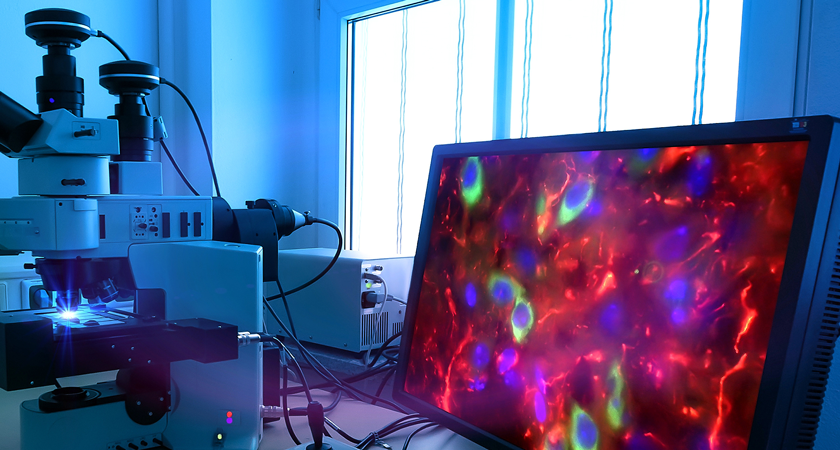Biomimetic coatings: making HTS cell models more relevant
To improve the translational relevance of cell-based screening data, assay developers are increasingly turning to human cell types and more challenging model systems based on primary cells, stem cells and mixed cell cultures.
While the expectation is that more disease-relevant cell types will improve the predictive validity of screening models, in practice the culture conditions often fail to mimic the cells’ native microenvironment closely enough.
Here we explore the crucial role biomimetic microplate coatings play in achieving optimal performance and physiological relevance of advanced cell models for high-throughput screening (HTS) and high-content screening (HCS) applications.
Getting closer to in vivo
Studies repeatedly highlight target-validation challenges, lack of clinical efficacy, and safety issues as major culprits behind high drug attrition rates.1-5 CRISPR-based gene function analysis and target-agnostic phenotypic screens are just a couple of areas where advanced cell models and high-resolution imaging are being leveraged to improve target selection and gain earlier insights into the efficacy and toxicity of drug candidates before progressing to more costly clinical phases of development.
Key to the success of these strategies is the development of cell models with high predictive validity.6 In particular, the surface on which the cells are grown has a profound influence on their growth, behavior and function in vitro.
In their natural environment, cells exist in a dynamic relationship with the surrounding extracellular matrix (ECM). The composition of the ECM varies with the tissue type, providing essential structural and biochemical cues for cell adhesion, proliferation and gene function.
Protein-coated microplates allow the creation of a biomimetic surface that more closely resembles the native ECM. Cells cultured on these plates are more likely to behave as they would in vivo, leading to more accurate and predictive screening results.
Optimized results with primary cells and stem cell-derived models
Patient-derived primary cells are often the best predictive models because there is little doubt as to their disease-relevance. However, primary cells are inherently more challenging to culture and maintain than immortalized cell lines. They can rapidly lose important functional and phenotypic characteristics when cultured on artificial surfaces.
Protein coatings chosen to mimic the cells’ in vivo microenvironment offer the best chance of maintaining the structural support and biological cues necessary for disease-relevance and consistent performance in screening applications.
Stem cell model systems can be equally challenging to adapt for screening applications. For optimal reliability and performance, stem cells benefit from a culture surface that resembles their in vivo niche. Certain ECM components, such as laminin 511, play important roles in stem cell survival and self-renewal, while others can help enhance and maintain differentiation.
Traditionally stem cells have been co-cultured with feeder cells, which help condition the medium and establish a supportive ECM. Biomimetic coatings tailored to mimic the stem cell microenvironment may eliminate the need for feeder cultures, while helping to maintain pluripotency and/or support programmed differentiation.
Improved cell adhesion, spreading and morphology in vitro
Cell adhesion is crucial for maintaining cell viability, function and performance in culture. The adhesion requirements of different cell types vary depending on which integrins and other cell surface adhesion molecules they express to mediate interactions with the ECM and neighboring cells.
While some cell types can adhere directly to the hydrophilic surface of standard tissue culture-treated surfaces, others require more specific interactions for optimal adhesion, spreading and formation of stable focal adhesions. Coating the microplate growth surface with ECM extracts or individual ECM components (e.g., collagens, fibronectins and laminins) provides the anchorage sites and structural support necessary to facilitate the full adhesion process.
From a practical standpoint, more stable cell attachment helps prevent loss of cells during assay preparation and screening, for more consistent and reproducible results.
The tendency of cells to round and form clumps on artificial surfaces is another common challenge in HCS. Not only does clumping cause difficulties with imaging and analysis, it also contributes to cell loss and variability that can further compromise the results.
Protein coatings promote more uniform distribution, adhesion and spreading of individual cells across the well surface, for a morphology that is more amenable to high content imaging and analysis. This results in more informative images and less experimental variability.
Don't miss our regular updates on scientific topics around HTS
References
1. Bunnage, ME. Getting Pharmaceutical R&D Back on Target. Nat. Chem. Biol. (2011) 7: 335– 339.
2. Hay, M et al. Clinical Development Success Rates for Investigational Drugs. Nat. Biotechnol. (2014) 32: 40– 51.
3. Dowden, H and Munro J. Trends in Clinical Success Rates and Therapeutic Focus. Nat. Rev. Drug Discovery (2019) 18:495– 496.
4. Harrison, RK. Phase II and Phase III Failures: 2013–2015. Nat. Rev. Drug Discovery (2016) 15: 817– 818.
5. Van der Graaf, PH. Probability of Success in Drug Development. Clinical Pharmacology and Therapeutics; John Wiley and Sons, Inc. (2022) pp: 983– 985.
6. Scannell JW et al. Predictive validity in drug discovery: what it is, why it matters and how to improve it. Nature Reviews | Drug Discovery (2022) 21:915-931.
